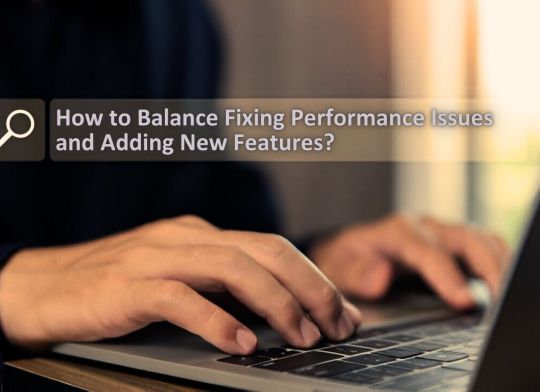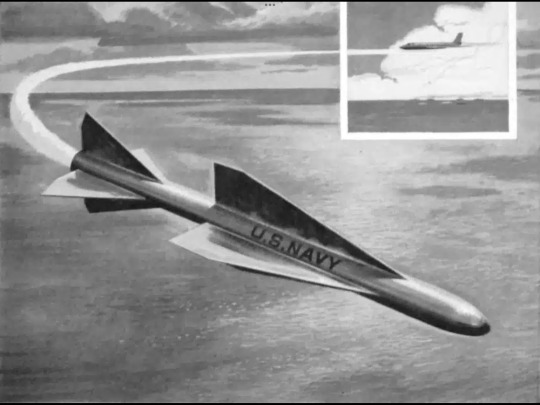#Performance and Load Testing Services
Explore tagged Tumblr posts
Text

Embark on a global bug hunt with our SDET team, leveraging cloud-based mobile testing to ensure your app achieves flawless performance across all devices and networks. With cutting-edge tools and a meticulous approach, we identify and eliminate bugs before they impact your users. https://rb.gy/jfueow #SDET #BugHunt #CloudTesting #MobileAppQuality #FlawlessPerformance SDET Tech Pvt. Ltd.
#Software Testing Companies in India#Software Testing Services in India#Test Automation Development Services#Test Automation Services#Performance testing services#Load testing services#Performance and Load Testing Services#Software Performance Testing Services#Functional Testing Services#Globalization Testing services#Globalization Testing Company#Accessibility testing services
Agile Testing Services#Mobile Testing Services#Mobile Apps Testing Services#ecommerce performance testing#ecommerce load testing#load and performance testing services#performance testing solutions#product performance testing#application performance testing services#software testing startups#benefits of load testing#agile performance testing methodology#agile testing solutions#mobile testing challenges#cloud based mobile testing#automated mobile testing#performance engineering & testing services#performance testing company#performance testing company in usa
0 notes
Text
Load Performance Testing: A Crucial Element in Software Testing for Scalable Applications

In today’s tech-driven world, where software applications power everything from online shopping to banking and education, delivering a seamless user experience is more important than ever. Users expect apps to work quickly, efficiently, and without any hiccups—even when thousands of people are using them at the same time. That’s where load and performance testing comes into play. It's not just a phase of the software testing lifecycle anymore; it’s a necessity for ensuring software quality assurance and long-term scalability.
Let’s say you’ve built a new e-commerce app. It runs fine during development and internal testing, but when it goes live and hundreds or thousands of users start browsing and placing orders, the app becomes sluggish or even crashes. This is a classic example of what happens when proper load testing software or load and performance testing services are not used.
What is Load and Performance Testing?
Load and performance testing is a type of software testing that focuses on evaluating how an application behaves under normal and peak load conditions. It’s all about checking the app’s performance—does it respond quickly? Can it handle 1,000 users at once? What happens if the traffic spikes suddenly?
Load testing, specifically, measures how a system handles expected levels of traffic. On the other hand, performance testing may also include stress testing (pushing the system beyond its limits), soak testing (checking for stability over a long period), and spike testing (sudden traffic jumps). These tests together ensure your application won’t crumble under pressure.
Why It Matters for Scalable Applications
When developing any software, especially applications expected to grow over time, scalability should be a top priority. A scalable app means it can grow with your user base and handle more data or more users without breaking down. That’s where load and performance testing services become invaluable.
A well-performed software testing process that includes load testing helps you pinpoint where your system may fail as traffic increases. This could be a poorly optimized database query, an overloaded server, or a memory leak that only shows up after a few hours of heavy use. By identifying and fixing these issues early, you ensure your application scales smoothly.
The Role of Load Testing Software
There are plenty of reliable load testing software tools out there that help automate this process. Tools like Apache JMeter, LoadRunner, and Locust simulate thousands of users interacting with your application at once. These tools generate detailed reports on response times, error rates, server utilization, and other performance indicators, allowing developers and testers to tweak and optimize accordingly.
But it’s not just about tools. Good software quality assurance also involves experienced professionals who know how to analyze those reports and understand the context behind the numbers. That’s why many companies turn to specialized load and performance testing services for expert insight and testing strategies tailored to their unique systems.
Benefits Beyond Performance
Incorporating load and performance testing into your software testing strategy brings more than just speed improvements. It also:
Enhances user satisfaction by ensuring fast, reliable service
Prevents costly downtime during high-traffic events
Builds confidence in your app’s ability to scale
Helps you meet SLAs (Service Level Agreements)
Saves money by avoiding expensive emergency fixes after launch
Final Thoughts
If you’re serious about building scalable, reliable software, then load and performance testing should be baked into your development process from day one. It’s not just a technical requirement—it’s a commitment to delivering quality. In a world where users won’t hesitate to abandon an app that lags or crashes, ensuring software quality assurance through proper software testing and the right load testing software can make all the difference.
#software testing#load and performance testing services#performance testing#software quality assurance
1 note
·
View note
Text
Optimize Your Application's Performance: Expert Load Testing Services in Dubai by Novature Tech
Introduction:
In today's fast-paced digital landscape, application performance plays a crucial role in determining a business's success. A slow or unresponsive application can lead to a significant loss of revenue, and ultimately, a negative impact on your brand reputation. This is where load testing services come into play. At Novature Tech, we specialize in providing custom load testing solutions in Dubai, leveraging our expertise in load testing companies Dubai to ensure your applications perform optimally under heavy loads.
What is Load Testing?
Load testing is a type of performance testing that simulates a large number of users accessing an application or system simultaneously. The goal is to measure the application's performance under normal and peak loads, identify bottlenecks, and optimize it for faster response times. Load testing is an essential tool in today's digital era, as it helps you:
Ensure high availability and scalability of your application
Identify performance bottlenecks and optimize them
Improve user experience and satisfaction
Reduce the risk of downtime and data loss
Meet service level agreements (SLAs) and performance expectations
Why Choose Novature Tech for Load Testing Services in Dubai?
Novature Tech offers a range of load testing services in Dubai, tailored to meet the unique needs of your business. Our expert team of load testing specialists has extensive experience in:
Load testing companies Dubai: We understand the local market and requirements, ensuring our solutions are tailored to your needs.
Micro Focus LoadRunner: We specialize in using this industry-leading tool to create customized load testing scenarios.
K6 load testing services Dubai: Our team of experts will work closely with you to design and implement a K6 load testing strategy that suits your application's requirements.
Benefits of Choosing Novature Tech for Load Testing Services
By partnering with Novature Tech, you can expect:
Improved application performance and scalability
Enhanced user experience and satisfaction
Reduced downtime and data loss
Increased revenue through faster response times
Improved brand reputation through excellent performance
Cost-effective solutions tailored to your business needs
Conclusion:
In conclusion, load testing services are crucial in today's digital landscape, and Novature Tech is here to help. Our custom load testing solutions in Dubai, combined with our expertise in load testing companies Dubai, ensure your application performs optimally under heavy loads. Whether you're looking to improve performance, reduce downtime, or meet SLAs, our expert team is here to help. Contact us today to learn more about our load testing services in Dubai.
NOVATURE TECH
Address :
GULFMOON TR, LLC
Building No.384,
Sharjah Industrial Area 13,
Sharjah,UAE.
For Software Testing related queries, please contact
+91 8778006097
For HR related queries, please contact
+91 7339039264
Email : [email protected]
Reach us : https://novaturetech.com/
K6 performance testing Dubai | K6 load testing services Dubai | K6 performance testing San Francisco
Micro focus loadrunner Dubai Expert LoadRunner testers dubai LoadRunner testing solutions dubai
0 notes
Text

How to Balance Fixing Performance Issues and Adding New Features in Web Applications?
In today’s digital landscape, web applications are essential for business operations, marketing, and consumer involvement. As organizations expand and consumer expectations rise, development teams are frequently confronted with the difficult task of balancing two key priorities: addressing performance issues and introducing new features.
While boosting performance improves the user experience and increases efficiency, new features are required to remain competitive and meet market demands. Prioritizing one over the other, on the other hand, might have negative consequences—performance concerns can lead to a poor user experience while failing to innovate can result in a competitive disadvantage.
This blog delves into how to balance improving performance and introducing new features to web apps, allowing firms to satisfy technical and market demands efficiently.
Why Balancing Performance and New Features Is Crucial
A web application‘s success depends on both its performance and its features. However, relying entirely on one might result in imbalances that impair both user happiness and business progress.
Performance:Performance is an important component that directly influences user retention and happiness. Users can become frustrated and leave if the application has slow loading times, crashes, or problems. Ensuring that your web application runs smoothly is essential since 53% of mobile consumers would quit a site that takes more than three seconds to load.
New Features:On the other hand, constantly adding new features keeps users interested and promotes your company as innovative. New features generate growth by attracting new consumers and retaining existing ones who want to experience the most recent changes.
The dilemma is deciding when to prioritize bug fixes over new feature development. A poor balance can harm both performance and innovation, resulting in a subpar user experience and stagnation.
Common Performance Issues in Web Applications
Before balancing performance and features, it’s important to understand the common performance issues that web applications face:
Slow Load Times: Slow pages lead to higher bounce rates and lost revenue.
Server Downtime: Frequent server outages impact accessibility and trust.
Poor Mobile Optimization: A significant portion of web traffic comes from mobile devices and apps that aren’t optimized for mobile fail to reach their potential.
Security Vulnerabilities: Data breaches and security flaws harm credibility and user trust.
Bugs and Glitches: Software bugs lead to poor user experiences, especially if they cause the app to crash or become unresponsive.
Strategic Approaches to Fixing Performance Issues
When performance issues develop, they must be handled immediately to guarantee that the online application functions properly. Here are techniques for improving performance without delaying new feature development:
Prioritize Critical Issues:Tackle performance issues that have the most significant impact first, such as slow loading times or security vulnerabilities. Use analytics to identify bottlenecks and determine which areas require urgent attention.
Use a Continuous Improvement Process:Continuously monitor and optimize the application’s performance. With tools like Google PageSpeed Insights, you can track performance metrics and make incremental improvements without major overhauls.
Optimize Database Queries:Slow database queries are one of the leading causes of web app performance issues. Optimize queries and ensure that the database is indexed properly for faster access and retrieval of data.
Reduce HTTP Requests:The more requests a page makes to the server, the slower it loads. Minimize requests by reducing file sizes, combining CSS and JavaScript files, and utilizing caching.
5. Leverage Caching and CDNs: Use caching strategies and Content Delivery Networks (CDNs) to deliver content quickly to users by storing files in multiple locations globally.
Why Adding New Features is Essential for Growth
In the rapidly changing digital environment, businesses must continually innovate to stay relevant. Adding new features is key to maintaining a competitive edge and enhancing user engagement. Here’s why:
User Expectations:Today’s consumers expect personalized experiences and constant innovation. Failure to add new features can lead to customer churn, as users may feel your web application no longer meets their needs.
Market Differentiation:Introducing new features allows your application to stand out in the marketplace. Unique functionalities can set your app apart from competitors, attracting new users and increasing customer loyalty.
Increased Revenue Opportunities:New features can lead to additional revenue streams. For example, adding premium features or new integrations can boost the app’s value and lead to increased sales or subscription rates.
4. Feedback-Driven Innovation: New features are often driven by user feedback. By continuously developing and adding features, you create a feedback loop that improves the overall user experience and fosters customer satisfaction.
Read More: https://8techlabs.com/how-to-balance-fixing-performance-issues-and-adding-new-features-in-web-applications-to-meet-market-demands-and-enhance-user-experience/
#8 Tech Labs#custom software development#custom software development agency#custom software development company#software development company#mobile app development software#bespoke software development company#bespoke software development#nearshore development#software development services#software development#Website performance testing tools#Speed optimization for web apps#Mobile-first web app optimization#Code minification and lazy loading#Database indexing and query optimization#Agile vs Waterfall in feature development#Feature flagging in web development#CI/CD pipelines for web applications#API performance optimization#Serverless computing for better performance#Core Web Vitals optimization techniques#First Contentful Paint (FCP) improvement#Reducing Time to First Byte (TTFB)#Impact of site speed on conversion rates#How to reduce JavaScript execution time#Web application performance optimization#Fixing performance issues in web apps#Web app performance vs new features#Website speed optimization for better UX
0 notes
Text
Mastering Load Testing: Enhancing Application Performance
In today's fast-paced digital world, seamless user experience is crucial. Load testing plays a pivotal role in ensuring that applications perform optimally under heavy traffic conditions. By simulating real-world scenarios, load testing assesses how a system behaves under peak load and identifies potential bottlenecks before they impact end users.
As a vital part of performance testing, load testing ensures your website, mobile app, or software can handle high traffic without crashing. It’s not just about ensuring uptime; it’s about delivering a smooth user experience under all conditions.
Performance testing services offer an in-depth analysis to identify areas of improvement, optimize resources, and fine-tune your application for maximum efficiency.

Businesses often turn to a trusted performance testing company to handle their load testing needs. A professional team can run complex load testing services, ensuring your application scales effortlessly while keeping your users satisfied.
Ready to optimize your application’s performance? Choose Perftestpro for reliable and expert application performance testing. Our services are designed to ensure your software withstands even the toughest conditions.
Get in touch with Perftestpro today for comprehensive load testing services that keep your systems performing at their best!
#performance testing#performance testing services#load testing services#load performance testing#performance application testing#LoadRunner#JMeter
1 note
·
View note
Text
How to Perform Load Testing with JMeter: A Step-by-Step Guide
#How to Perform Load Testing with JMeter: A Step-by-Step Guide#How to Perform Load Testing with JMeter Step-by-Step Guide#Perform Load Testing with JMeter Step-by-Step Guide#Load Testing with JMeter Step-by-Step Guide#Testing with JMeter Step-by-Step Guide#Software Testing Services In India#Software Testing Services India#Software Testing Services#Software Testing Company In India#Software Testing Company India
0 notes
Text
QA & SOFTWARE TESTING - Spark Technologies
We design, develop, implement, manage and optimize access to systems and information to answer your business processing, application and infrastructure needs. Whether you are a private or public sector organization, or whether you want to run our solutions on your own hardware, or outsource your IT through us, Spark Technologies has the expertise you need to overcome the business challenges you face.

#functional testing#automation testing#compatibility testing#ui testing#load testing services#usability testing#cross-platform testing#performance testing services#integration testing#black box testing
1 note
·
View note
Text






More Simstober extras, again taken for the "Death's Door" prompt. I tend to take a lot of extra pics every time I'm in the game and then feel bad about deleting them, which results in a very cluttered Fraps folder. Posting them is how I deal with my hoarding issues. 🤣
And since this is a behind-the-scenes sorta post, you'll get to hear alllll about my picture-taking process (probably more than you care to know!)
Here are some random fun facts, in no particular order:
The Royal Crypt is a community lot, which means I had to send my sims to visit it in order to take pics. Took quite a few tries before I was able to load the Moonfeather household (crashes, crashes everywhere! -_-)
With photoshoots in general, I usually keep a "test" sim on hand who isn't needed for the photohoot itself, but rather to "work" in the background and perform all the little extra tasks required for the photoshoot (e.g. opening/closing doors, turning the lights on and off, or just being there while all my other sims are frozen with the freezer clock). In this case, my test sim was Marcus, who volunteered for the role all by himself (he flew in on his broom right after the lot loaded). Thank you for your services, Marcus!
I lucked out with Feanor's pose, which is actually just the autonomous "wring hands" idle animation. He looked so miserable doing it that I positively had to use it for the final pics! 🤣
I wanted to have a sim to plop into the coffin, even though I knew they wouldn't be prominent in the final photoshoot. Any random adult sim would've worked, but naaaah, I had to go the extra mile and opt for an actual Moonfeather blood relative. And since the only other Moonfeather I currently have in my game besides Aruena & Feanor is Arwan, who is a toddler... I aged him up so I could use him for my pics. Poor guy. 🫢💀
Just to clarify, Arwan is still a happy little toddler in my game and his untimely demise is NOT canon. I didn't specify who it was that the Moonfeathers were mourning in the OG photoset, so it's totally up to personal interpretation!
#sims 2#ts2#sims#simstober#simstober 2024#notsosimstober#notsosimstober 2024#bacc#wyverns bay#wyverns bay extras#aruena moonfeather#feanor moonfeather#arwan moonfeather#marcus blackbird#royal crypt#behind the scenes#mine#tw death
62 notes
·
View notes
Text
good news about Sims 2 legacy
After doing tip 5 (and using this article as a guide) and making a few performance changes based on this video, I experienced major improvements in the game.
I did 25,000 as my minimum and 30,000 as my maximum, updated my visual performance, disabled some startup apps and services, and optimized my browser. The biggest issue for Sims 2 and other games for me is my memory/RAM and I have more now after making these changes!
I could play Sims 2 Legacy for many hours!
The load times were quicker for me (they already kind of were before but there's still an improvement imo).
I got just about no lag
I was able to put glasses on my sim in-game lol
I had some game errors that I need to fix personally, but I was able to play two households and everything went well! For the first household, I decorated, my sim went on a date and they went to a few locations.
While playing the second household (in a different neighborhood), I played as normal for a while and tried to go out, granted, I did get pink soup, but the game didn't crash once!
I took my time with both households and just played as normal. I could exit the game myself and I was happy! After increasing my virtual memory and disabling some things, I think things are looking up!
I just wanted to share in case anyone bought Sims 2 Legacy and is still having issues. I will test out the Ultimate Collection, same with ReShade and custom lighting in the game files this week, as well as creating sims/pets, as they have given me crash problems in the past too! I will update this again too!
Note: I had mods and custom content active in my game too! My downloads folder is 19.3 GB. I also bought the Steam version!
51 notes
·
View notes
Note
I go you already have my apologies but can you re explain your ideal bird that you are breeding for. From the looks of your loft updates you prefer standard non exaggerated features and minimal muffs and normal length beaks
No worries. ^v^
I've been reworking a few things while we've been stuck on hiatus, so there have been some changes to the plans for the future, and I don't mind going over them.
I am trying to develop a unique breed specifically for therapy work.
As many of my long term followers know: A feral pigeon, found in a parking lot on the brink of starvation, taught himself to alert me for anxiety attacks of crippling severity.
If he could not alert me fast enough to prevent me going catatonic, he knew to go get my husband.
And he worked out a series of behaviors to draw me back out of that state if my husband was not with me.
He later developed an alert specific to blood sugar spikes.
That's far beyond the scope of an Emotional Support Animal!
And I believe that if a pigeon off the literal street was naturally inclined to develop these behaviors, then temperament traits conducive to such service work can be selected for.
I aim to do that by combining highly intelligent Performance breeds like Homers, Rollers, and Tumblers with structurally sound exhibition breeds possessing a demonstrably heritable mellow temperament.
And I want this breed to have a unique look that easily identifies it so that it will be hard for feather merchants to counterfeit. (Yes, that is a thing that happens.)
So, my favorite embellishments in the breeds we are already using are going to be enhanced by a few exhibition breeds who exemplify those traits, and one specifically for color.
To that end, we will be utilizing these performance breeds:

Feral
I can get into whether or not this is a breed in itself in another post. This is going to be a long one as it is.
There are several risks to working with ferals, absolutely.
You can pretty much guarantee that any you may find have lice, one or two species of worms, at least two protozoan parasites, and could potentially have a whole host of other bacterial or viral pathogens with out showing any outward sign.
Anyone who works with ferals as a first responder must be prepared to quarantine them carefully, vaccinate them, and test them to find out what all you will need to treat.
But there are three huge advantages for the Assistance Pigeon Project:
They are the epitome of structural soundness. That slight, agile little body has come to be through surviving generations of environmental pressures from having to travel long distances to find food to having to dodge a wide range of predators like cats and hawks.
There is no better source of intelligence than the descendent of birds that have survived for generations on their wits and luck alone.
And no better source of an excellent immune system than the result of generations living with the host of parasites and pathogens that they are so often loaded down with in the wild. There is a reason you won't see any outward sign that a feral has anything!
Once a feral's parasites and pathogens are cleaned out, they are incredibly sturdy!
Being a domesticated animal, the offspring of ferals in human care tend to focus all the inquisitive brightness that kept their line alive in the wild on bonding and communicating with their care taker.

Racing Homer
The thoroughbred of pigeons.
If you do not count Ferals as a breed, this is the most structurally sound and intelligent of all pure breeds.
Hands down the single most athletic!
They are stockier, more aerodynamic, and far more muscular than the average feral, because they were bred to be able to find their way home from drop points up to and over 500 miles away.
It takes not just fine tuned musculature and metabolism, but an excellent memory and keen intelligence to adapt on the literal fly to the changes in environment and predator populations over such distances.
Because of their exposure in races to hundreds or even thousands of other birds from lofts all across the country, Racers also have the strongest immune system of any purebred.

Birmingham Roller
This is not a breed that flies long distances like Racers or Ferals, but as a performer, it is still required to be structurally sound.
Performances consist of flying in a small flock called a Kit to perform a waterfall effect of staggered rolls where birds backflip 15-20 times in a row in midair, straighten from the roll, and rejoin the kit, one after another.
They are less flighty than Ferals and less independent than Racers, typically working much more closely with their trainer: keeping within sight of the loft and earshot of the person.
This makes them a little more human focused and naturally inclined to be biddable.
Though many traits vary wildly by line, these tend to be very small birds; energetic, jaunty, and playful.
Aside from adding that wonderful temperament, they will help keep the end result small.

Portuguese Tumbler
I waffled on these for quite a while, mostly because of their very small size and absolute breeding overdrive.
But they are excellent parents despite being the second smallest breed of pigeon in the world, and, unlike the Valencian Figurita, generally don't need one of their nestlings fostered.
And that speaks very highly of just how physically fit they are.
There are a few big breeds among the ones selected specifically for temperament, so Ports and Birms should help bring the size down and improve the parenting ability of the blend.
But the real push was just how Exuberantly friendly and playful this gleeful little breed is!
There are two performance breeds I have no hands on experience with yet that I would like to add:

Oriental Roller
This one is a dual purpose:
Once again, a structurally sound bird of moderate build, because it is still flown in competition.
But what interests me is the tail.
This breed is one of the major components of the Mindian (Miniature Indian) Fantail, Bred to Indian Fantails too small to compete with in order to improve the structural soundness and preserve the fan.
And as one of the embellishments I want in this breed is a slight fan, this body type is ideal to help display it comfortably.

Turkish Takla
The Takla is a Roller breed, still flown in competition, and becoming popular in the US for its docile, biddable temperament.
It comes with or without crest or muffs, and I very much like the grouse muffs of this breed.
We'll have to see what the temperament is really like, but the bird is gorgeous, and I expect it will blend well in terms of structure, temperament, and moderate embellishments that are still eye catching.
Breeds selected for temperament:

Show Line Danzig Highflier
This breed is the single best investment I have ever made towards the temperament of my breeding flock!
They are intensely friendly! Every bird I have raised with any amount of Danzig in them has gone on to be a beloved cuddle bug of a pet.
My Husband's ESA, Cotta, is the closest we have gotten so far to the behaviors we want in a bird bred for Service work.
Not only is he my Husband's devoted ESA, he also acts as mine when I need regulation, and even Cheeto's when he struggles with impulse control or obsessive behaviors.
Cotta is so intensely human focused that he has organized Cheeto and another bird who was only with us temporarily to provide me aid during a very severe episode of vertigo.
That temperament has passed so reliable through Satin's family that I would have to be an idiot not to incorporate this breed.

Frillback
A shockingly mellow breed!
And not just because they could only be less aerodynamic if you gave them parachutes..
A great test to rule out learned helplessness being the root of any big or showy breed's apparent mellowness is to cross them with a smaller breed that flies well so the offspring will be more maneuverable than the big or highly embellished parent.
If the offspring that can physically evade you is flighty and nervous by nature, then the "mellow docility" of the parent is just learned helplessness.
But if that more maneuverable offspring is just as docile and tractable as the parent, then you can be pretty well assured that that really is the parent's temperament.
Frillbacks fall so soundly into the "genuinely that sweet tempered" category that it has passed on into multiple generations of my flock.
I won't use this breed much, because the curls are a little much and it's hard to find clean legged birds or lines with only moderate muffs.
But their temperament is so fantastic that it would be remiss of me not to use them at all.

Lucerne
This elegant Swiss breed borders on too mellow for its own good.
There are lines with peeps so quiet that they fail to trigger the parent's feeding response. Paired with another breed, though, even completely oblivious Lucerne will respond correctly once they see their mate feeding.
My first pair, despite hating me with the fury of a thousand suns, were so perfectly tractable that working with them was a breeze.
Some of my most out going individuals are crossed with this breed.
I love their structure and their very moderate Grouse muffs.
They have a shorter beak than I like, but it's long enough to be functional, and the other breeds will keep the beak from getting too short.

Show Type Racing Homer
This is another show breed famed for their docility.
While it isn't as absolutely incredible as the breeds higher on the list, I will be incorporating them for their very simple, elegant structure, and bold, out going curiosity.

Classic Old Frill
This breed is somewhat of an indulgence, I admit.
Of the breeds included for temperament, this is the one most likely to be flighty or skittish.
But I have such a deep and abiding love for what they are: A return to form to the original standard of the Turkish Hunkari from the now beakless Modern and Oriental Frills.
Basically, the avian version of the Retromops (If you love Pugs, you should look this breed up. It's a return to the original standard: a pug with a muzzle, that can breathe normally and regulate its body temperature.)
This breed was my first love, and I want to continue to support the breeders that loved them enough to write preventative measures into the breed standard requiring that their beaks never get so short that they can't feed their peeps unaided.
There is one other breed I want to add for temperament entirely because of the temperament of mixed progeny I have purchased for the breeding program:

American Show Racer
Titan and her Mother, Ibis, take very strongly after their ASR Grandmother/Mother, respectively.
Ibis was so friendly and outgoing on arrival that I was sorely tempted to keep her as a personal pet instead of having her join the breeding flock.
Titan, despite being very defensive when she was little, grew up to be so much like her mother it takes my breath away.
I am curious to see if this breed is really that sweet tempered and it really passes so reliably, or if Ibis and her line inherited their temperament from the Lucerne side.
There are only two breeds added purely for their embellishments:

Old Dutch Capuchin
I love the Danzig's mane, and I think a little touch of ODC will add some luxury to it.
My experience with this breed was not the best temperament wise, but I have read that not to be the norm and hope to have better luck with a different line.

Garden Fantail
This is the most structurally sound of all fantails, able to fully close the fan when not displaying to fly and walk comfortably.
I do not want a full fan in this breed, but Fans seem to be a partial dominant with variable expression, if my two half fantails,

Sher and

Soiree, are any indication.
Not a necessity, by any stretch, but I really like the look of a moderate fan.
Finally, there is a single breed I plan to incorporate for color.

Archangel
There are exactly two traits I want from the Archangel:
The dominant half of its bronzing, which results in a robin like rusty breast in heterozygous form
And the intense sheen of its recessive grease quill.
With luck and patience, I hope for these nine breeds; six for performance, six for temperament, two for embellishments, and one for color...
Add up to a healthy, long lived Therapy breed whose intelligence is not blunted by their laid back mellow docility and whose unique look sacrifices none of their structural integrity.
The breeder cap will remain at ten pair, hatch controlled between evaluation periods.
Babies will be evaluated for six months.
If neither is an improvement over one or both parents, both will be classed as pets and adopted out.
If one is an improvement over which ever parent fits the program the least well, or better yet the ideal blend of their parents beneficial traits, then that one will stay, the parents will retire and go up for adoption as a bonded pair, and the sibling will be made available to the public.
New blood will come in to improve what ever trait is most lacking after each evaluation period.
Offspring we produce may become available at younger than six months once the temperament I want is reliably consistent.
But I expect that to take a fair few generations.
42 notes
·
View notes
Text

By ensuring your software is meticulously tested for global readiness, we help you deliver seamless user experiences across diverse languages and cultures. Let's transform your product into a global phenomenon, reaching audiences far and wide with precision and reliability. https://bit.ly/3EKzvs2 #SDET #GlobalProduct #LanguageGap #SoftwareTesting #UserExperience #Localization SDET Tech
#Software Testing Companies in India#Software Testing Services in India#Test Automation Development Services#Test Automation Services#Performance testing services#Load testing services#Performance and Load Testing Services#Software Performance Testing Services#Functional Testing Services#Globalization Testing services#Globalization Testing Company#Accessibility testing services
Agile Testing Services#Mobile Testing Services#Mobile Apps Testing Services#ecommerce performance testing#ecommerce load testing#load and performance testing services#performance testing solutions#product performance testing#application performance testing services#software testing startups#benefits of load testing#agile performance testing methodology#agile testing solutions#mobile testing challenges#cloud based mobile testing#automated mobile testing#performance engineering & testing services#performance testing company#performance testing company in usa
0 notes
Text

AIM-174B Loadout Brings Back U.S. Navy’s Cold War Roots
The U.S. Navy's return to VLRAAMs offers a glimpse into the envisioned strategy to overcome the 'tyranny of distance' in the Pacific.
Carter Johnston
AIM-174B
Another sighting of the AIM-174B, this time at Point Mugu Naval Air Station, is offering a look at what the future of naval aviation air warfare operations could look like in a high intensity conflict, bringing back hints of the U.S. Navy’s past in great power competition.
An F/A-18F Super Hornet from Test and Evaluation Squadron 9 (VX-9), the primary test squadron for the AIM-174B, was spotted by father-son Instagram duo Mark and Taj of @point_mugu_skies. Fully loaded, the F/A-18F was carrying four CATM-174Bs, three CATM-120Ds, two CATM-9Xs, and a centerline fuel tank with the IRST-21 infrared-search-and-track system.
Operationally, this would offer a Super Hornet unparalleled capabilities for long-range engagements with four AIM-174Bs, backed up by AIM-120Ds that are reportedly approaching the threshold range for AIM-260 JATM range requirements–potentially up to 190 kilometers (120 miles).
The U.S. Navy’s investment into these advanced capabilities and longer ranges is another example of the evolving Carrier Air Wing concept heading into the late 2020s. Naval News previously reported on concept that was highlighted at this year’s Rim of the Pacific Exercise. The debut of operational AIM-174Bs in the U.S. Navy, which received significant press coverage during their appearance at RIMPAC 2024, marks a significant change in carrier air power.
Air Wing Of The Future

A VFA-97 ‘Warhawks’ F-35C Lightning II and VAW-113 ‘Black Eagles’ E-2D Advanced Hawkeye prepare for flight operations aboard the USS Carl Vinson (CVN-70) during Exercise Rim of the Pacific (RIMPAC). The F-35C and E-2D provide the backbone of sensor coverage to the USS Carl Vinson and all of Carrier Strike Group One.
Return of the Outsized Giants
Through the mid-2010s and early 2020s, the U.S. Navy worked on a viable return to the fleet defense fighter concept, this time centered around the F/A-18 Super Hornet. Testing of an airborne RIM-174 ERAM may have started as far back as 2015 under the ‘Future Capability Demonstration’ (FCD) testing program. There are no public details of FCD but it featured captive carried airborne and land-based tests.
Testing continued through the 2010s under the same name, likely part of a larger Special Access Program (SAP). A captive carry RIM-174 was first spotted in 2021 painted in an orange test scheme, flying with a VX-31 Test and Evaluation Squadron Super Hornet. It was spotted again in early June 2024, this time flying with a VX-9 Test and Evaluation Squadron Super Hornet.
Naval News was first to break the story on the missile’s operational capacity in the U.S. Navy. On July 4th, a U.S. Navy Spokesperson declared the AIM-174B ‘SM-6 ALC’ as “deployed in the Navy today”. In the following days, the missile had a very public debut at RIMPAC 2024 with VX-9 and the USS Carl Vinson‘s CVW-2 Advanced Air Wing.
The AIM-174B likely boasts a range exceeding 400 km given the size of the missile itself alongside the unclassified performance numbers of the surface-launched RIM-174 ERAM. It is the first dedicated VLRAAM in U.S. Navy service since the retirement of the AIM-54C Phoenix in 2004.
The U.S. Navy also has another up-and-coming long-range AAM, the AIM-120D3 AMRAAM, the latest AMRAAM variant in the family. According to an Air and Space Forces interview with John Norman, Raytheon vice president for requirements and capabilities for air and space systems, the AIM-120D3 is approaching threshold range for the AIM-260 JATM program, specifically that it is “beyond parity” with the AIM-260.
The VX-9 Super Hornet spotted near Point Mugu would offer four missiles, AIM-174Bs, that could hit targets 400+ kilometers (248+ miles) away with an additional three missiles, AMRAAMs, that could hit targets 200+ kilometers (124+ miles) away. All seven of those missiles having a longer range than the Cold War’s AIM-54 Phoenix.
History of the U.S. Navy’s Very Long-Range Air-to-Air Missile (VLRAAM) Family
Upon the cancellation of the U.S. Air Force XF-108 and YF-12 high-altitude interceptors and their unique long-range AIM-47 Falcon air-to-air missiles, the United States was faced with a critical range gap against up-and-coming threats from Soviet bomber regiments and their advanced anti-ship missiles going into the 1960s.
The U.S. Navy was working on their own fleet defense fighter, the Douglas F6D Missileer, alongside a dedicated air-to-air missile, the AAM-N-10 Eagle. Both programs were shuttered in late 1961 following arguments against the aircraft due to system complexity, lack of self-defense capabilities, and impending budget cuts.

An artist rendition of the Bendix AAM-N-10 Eagle fired by a Douglas F6D Missileer. Both were cancelled in December 1961. U.S. Navy Naval Aviation News.
Despite the loss of the Missileer, the U.S. Navy still wanted a carrier-based, fleet defense oriented fighter aircraft with long reach and very long-range air-to-air missiles. One that could engage large, non-maneuvering targets from outside the range of opposing escort aircraft. To meet the need, the developer of the AIM-47 Falcon, Hughes, pitched the missile to the U.S. Navy as the AAM-N-11 Phoenix. The dedicated radar needed for the missile, the AN/ASG-18, was also modified and pitched to the U.S. Navy as the AN/AWG-9.
Many eyes looked to the TF-X program and F-111B to fill the role of a fleet defense fighter. That development effort also ran into obstacles through the 1960s. The F-111B was plagued by excessive weight, poor performance on carrier takeoffs and landings, and lack of engine power. It was cancelled in May 1968 and only seven aircraft were delivered.

The first two U.S. Navy General Dynamics/Grumman F-111B fighters (BuNo 151970, 151971) in flight over Cuttyhunk Island, Massachusetts (USA). 151970 made its first flight on 15 May 1965 and was stricken on 3 December 1969. 151971 crashed on 11 September 1968 into the Pacific Ocean 160 km west of Point Mugu, California. The test pilots Barton Warren and Anthony Byland were killed. U.S. Navy photo.
The U.S. Navy’s decade long effort to extend their fleet defense envelope ended with the rapid development and introduction of the Grumman F-14 Tomcat. The fighter came with its own problems, partially due to the requirement of the large AN/AWQ-9 and outsized AIM-54 Phoenix, but also due to the TF30’s turbine blade reliability as and a compressor stall risk at high angles of attack.
The F-14 served into the 2000s, with iterations throughout its life that made the F-14 more reliable and made the AIM-54 even more potent in long-range engagements. The AIM-54 was retired in 2004 with the U.S. Navy’s AIM-120C AMRAAM entering widespread use. The F-14 retired two years later in 2006 after 32 years of flying, replaced by the Super Hornet.
20 years after the retirement of the AIM-54, the U.S. Navy has returned to its former days of long-range air-to-air missile concepts and practices. The culmination of AIM-174B development has brought that capability back to the U.S. Navy’s Carrier Air Wings into the late 2020s and 2030s.
@NavalAirNews.com
20 notes
·
View notes
Text
#jmeter testing services san francisco#jmeter load testing experts san francisco#advanced jmeter performance testing san francisco
0 notes
Text
Common Faults in Switchgear Systems and How to Fix Them

Low voltage switchgear plays a crucial role in protecting electrical circuits and ensuring the safe distribution of electricity in commercial, residential, and industrial environments. However, like any electrical equipment, switchgear systems can develop faults over time, leading to power disruptions, equipment damage, or even fire hazards.
In this article, we’ll explore the most common issues in low voltage switchgear, their possible causes, how to fix them, and preventive maintenance tips to ensure smooth operation.
1. Overheating of Switchgear Components
Cause:
Loose electrical connections
Overloaded circuits
Poor ventilation
Aging components
Solution:
Tighten all connections using a torque wrench
Redistribute electrical load or upgrade to a higher-rated switchgear
Improve cooling/ventilation in the switchgear room
Replace old or worn-out components
Prevention:
Conduct regular thermal imaging inspections
Maintain optimal room temperature and airflow
Schedule periodic tightening of connections
2. Tripping of Circuit Breakers
Cause:
Short circuits or ground faults
Overload conditions
Defective breakers
Solution:
Identify the fault using an insulation resistance tester or breaker analyzer
Remove the cause of the overload
Replace or service the faulty circuit breaker
Prevention:
Use the correct size and type of breaker for each circuit
Monitor electrical loads regularly
Perform periodic breaker testing and calibration
3. Arcing or Flashovers
Cause:
Dust, moisture, or contamination inside the switchgear
Damaged insulation
Improper clearances
Solution:
Clean and dry the internal components
Replace or re-insulate affected parts
Ensure proper spacing and clearance between conductors
Prevention:
Maintain a clean and dry switchgear enclosure
Conduct insulation resistance testing periodically
Use arc flash protection gear and systems
4. Failure of Control Circuits
Cause:
Blown fuses
Broken control wiring
Faulty relays or timers
Solution:
Test and replace blown fuses
Inspect and reconnect or replace broken wires
Check relays, timers, and contactors for functionality
Prevention:
Use quality wiring and connectors
Implement surge protection devices
Conduct routine functional tests on control circuits
5. Mechanical Wear and Tear
Cause:
Frequent switching operations
Poor lubrication
Old mechanical components
Solution:
Replace worn-out mechanical parts (e.g., springs, latches)
Lubricate moving parts as per manufacturer’s guidelines
Retrofit old switchgear with modern alternatives
Prevention:
Schedule mechanical maintenance regularly
Monitor switching frequency and upgrade equipment if needed
Final Thoughts
Low voltage switchgear is the backbone of your electrical infrastructure. Regular maintenance, proper installation, and early detection of faults are key to ensuring safety and efficiency.
Quick Maintenance Checklist:
Thermal imaging checks
Insulation resistance testing
Breaker calibration
Visual inspection for dust/moisture
Cleaning and lubrication
By understanding common faults and how to address them, you can reduce downtime, improve safety, and extend the life of your low voltage switchgear system.
7 notes
·
View notes
Text
Re: A Word on the Prototyping Process for Rotdolls. Internal Communication.
I hope this message finds you well.
It has come to my attention that there is a bit of confusion among staff regarding the development, prototyping, and testing processes for the SPIRAL (Synthetic Priority-Intensive Reborn Automata Limbsprite) series Rotdoll. This will be a brief overview regarding the questions I found prevalent or important to note.
To start, the transitional candidate must be in a state considered “too far gone,” "incurable" or “irreparable.” This is the number one criteria used when our manufacturers’ scouting contractors are procuring viable product. In fact, we tend to advise them on using those exact keywords. These candidates are rotting, barely functional, and while we cannot “fix” them, we can give them a chance. Once a promising candidate is located, we make contact and gain approval. Then the rebirth can begin.
The sedated Limbsprite is brought in, and we begin taking our protocolar measurements. Stretch out the legs, measure from heel to back of knee. From back of knee to buttocks. Around the widest section of the thigh. Around the knee. Around the widest section of the calf. Around the ankle. Repeat the same pattern on the other limbs; There should be no skipping of the second leg, as these naturally occurring bodies have imperfections and mismatched measurements that must be accounted for in the upgrading/rebirthing process.
Once the measurement phase is complete, our manufacturing drones are utilized in crafting what we call the Reciprocity Vessel Shell, or more commonly the RV-Shell, for the lucky Limbsprites who make it this far. They should consider themselves to have won the lottery! Their Shell will keep them going, as well as allow them to act out fulfilling lives in service to those they are in the possession of. But I’m getting ahead of myself. Next is the programming phase.
Once the Shell has been installed on the fleshwire of the Limbsprite’s exterior, and the necessary processing, function and suppression components (which come with our proprietary firmware pre-loaded) have been implanted into the subject’s brain and body, we can begin the programming process. This stage is the most time intensive, as there has to be a determination made based on the individual unit regarding what services it can or should be put forth to perform.
Maybe this Rotdoll is more suited for deployment in war, or perhaps this one is only to be used for janitorial service. This one is bound for corporate chauffeuring, and this one will be the worlds most efficient espionage and infiltration tool. To draw from a real example, take prototypal batch F; Most, if not all, Rotdolls belonging to batch F were in some capacity suited for direct combat. This, however, is atypical. Most batches are far more diversified in their application potential; Batch H, for instance, contained no two Rotdolls consigned to the same Service. This variance in Rotdoll implementation is something our company (rightfully!) touts above our competitors; It takes a massive amount of expertise to be able to direct such dissimilar units on their individual utilities. Yes, due to this, we have investors hesitant to buy in, given that the demand ebbs and flows depending on the stock we have at any given time, but the investors we do have remain passionate about the work we do here, and know to trust our process, as they have seen the broadly-applicable results.
To continue the process, we reinforce what the Executives have come to call the “Exertive Will.” This is the drive that our SPIRALs (and all Rotdolls broadly) experience that pushes them towards the goal we assign to them. With Rotdolls being more prone to hardware exhaustion, processing fatigue, Wirepain, and the industry-dreaded Techrot than the average automata on the market, we strive to imprint the Exertive Will on our units very early and very concertedly, to ensure that the units we distribute are not doomed to early failure and unmarketability.
I won't get into the weeds on the details of Exertive Will. That is jargon for our engineers to untangle. The purpose of this email is just to clear up some of the disconcertment that seemed to be spreading around among some of our newer employment bracket.
I hope that this was informative, and if you have any further inquiries, please bring them to your floor manager, and they will explain what their (and your) clearance allows.
From the office of
[NAME MISSING]
Gossamer Branch Manager of [LOCATION MISSING]
** This is classified internal communication meant only for the addressees copied on the original electronic mail. Sharing this message or the information therein is a breach of company non-disclosure clauses as well as local law. If you have received this message in error, please respond to this message with your email address and delete correspondence completely.
22 notes
·
View notes
Note
Less of an ID here, but what are your thoughts on the AbramsX, both as a platform as whole, and what technologies from it do you think will show up on future upgrades to the Abrams?

Oh boy, the Abrams X tech demo.
AKA: "Oh, so that's what the FCS program was for."
I have a lot of thoughts on the Abrams X, so, if you don't care to read all that, I'll leave a tl;dr at the bottom, in case someone wants to know my opinion without wanting to know why I have that opinion (for some reason.)
The Abrams X incorporates a lot of technology that excites me an awful lot. However, there are three things that stick out the most, so I'm gonna talk about them:
#1. The engine. The Abrams X uses a hybrid diesel engine (designed by Cadillac, if I remember correctly), which is a massive improvement over the current Abrams' gas turbine, which is less fuel efficient than just about every other MBT around. The new engine solves this problem by both switching to a hybrid design, which has greater performance, lesser noise, and lesser fuel consumption.
2. The turret/gun. It's remotely controlled, and miles better than the current m256, being lighter and even further integrated into optics/targeting. While I expect the real next-gen tanks to be equipping larger bore guns (in response to Russia and China looking to up-gun their next-gen MBTs), this Cannon is a fantastic intermediate step, and a great test bed/proof of concept for a remote-operated, auto-loading turret. This also drops the required crew down to 3, which may not seem like a big deal, but actually represents some pretty big stuff.
3. The integration. Ah, the "system of systems", come at last. Full integration to a combat network of drones, CAS fighters, other tanks, and in the future, perhaps fully autonomous ground vehicles. This is the thing that excites me most, as it means a truly massive level of integration and cooperation between every element of a combined arms forces, allowing every part to operate at a greater capacity. I've actually spoken with M1 tankers, and they seem most excited about the new Airplane-style helmets, and the level of coordination and targeting and spotting ability supplied by integrated drones.
However, it's not all sunshine and roses. With any massive leap forward in technology, this introduces a thousand thousand new potential points of failure into the system of every Abrams tank, which can cost lives when it counts. In addition, concerns have been expressed over the lowered crew count, saying that three people is not a reasonable number to expect to service and maintain a tank of the Abrams size out in the field, even with the supposed lower maintenance requirements of the Abrams X. Additionally, the smaller crew size and heavier focus on technology could indicate a shift in American tank ideology, towards the tanks being put out by other geopolitical powers, like China, Russia, and others.
So, to summarize, (here's that TL;DR I was talking about.) I think the Abrams is an incredibly promising test bed that is the culmination of the 1999-2009 Future Combat Systems program, and am excited to see how the technology will develop into the next generation of MBTs. However, I am cautious, as I can see several possible downsides to a lower crew size and a heavier reliance on tech.
33 notes
·
View notes